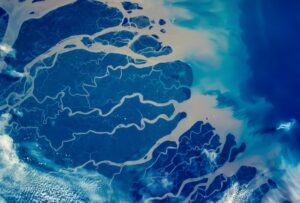To protect wildlife and curtail a growing number of tourists in recent years, three popular fiords on the East Coast of Svalbard have been closed
Svalbard, that mountainous and glaciated Norwegian archipelago just 1,100km from the North Pole, abounds in polar bears, seals, arctic foxes, and reindeer. Because of its wildlife, nearly two-thirds of the island group is protected.
About 3,000 people also live here, and most of them live in Longyearbyen and make a living from arctic tourism. Some of them have harshly criticized new regulations that restrict access to some of the most popular areas.

The spectacular East coast of Svalbard has become increasingly popular with snowmobile outfitters in recent years. Photo: Michael Wenger
The administration, the Syseelmannen, is required to limit human activities potentially disturbing to wildlife. So they have announced that they will be closing three popular fiords (Tempelfjorden, Billefjorden, and Van Mijenfjorden) to all motorized traffic — i.e. snowmobiles — from March 15 to June 1.
People can still apply for permission to travel there, but locals say that this process takes too long and won’t help tour operators. Outfitters bring tourists to this area on multi-day tours to observe Svalbard’s wildlife and scenery. Researchers, hunters, and fishermen also frequent the three fiords.
“The regulated areas are very important habitats for ice-dependent species,” says Kristen Heggelund, the head of the Sysselmannen’s environmental protection department. “These areas are [also] the most busy when it comes to motorized traffic.”
To outsiders, a few months of restrictions does not seem excessive, but spring is one of the peak tourist seasons, when it’s easiest to get around and spot wildlife. By June, the sea ice is too weak for touring.
The new regulations come from research done by the Norwegian Polar Institute, which determined that these areas serve as breeding and feeding grounds for ringed seals, and that snowmobile noise would “strongly affect” them. The seals in turn attract polar bears, particularly mothers and cubs, from April onward. A decline in seals has a domino effect on other wildlife.

Svalbard seals: subject to disturbance. Photo: Michael Wenger
The people of Longyearbyen claim that the consultation period for the new rules did not give them enough time to put forward their own assessments and that the closures will lead to an unintentional concentration of tourists in one or two other areas.
Rupert Krapp, a polar guide and ecologist with the Norwegian Polar Institute, and who lives in Longyearbyen, points out that only the inner part of these fiords are closed: Tourists can still pass the outer mouths on snowmobile, they just can’t go to inside to seek out wildlife or approach a popular glacier wall, the only accessible one in that area and one of the highlights of an East Coast tour. The restrictions, he suggests, are a response to the unbridled growth in tourism in recent years.






